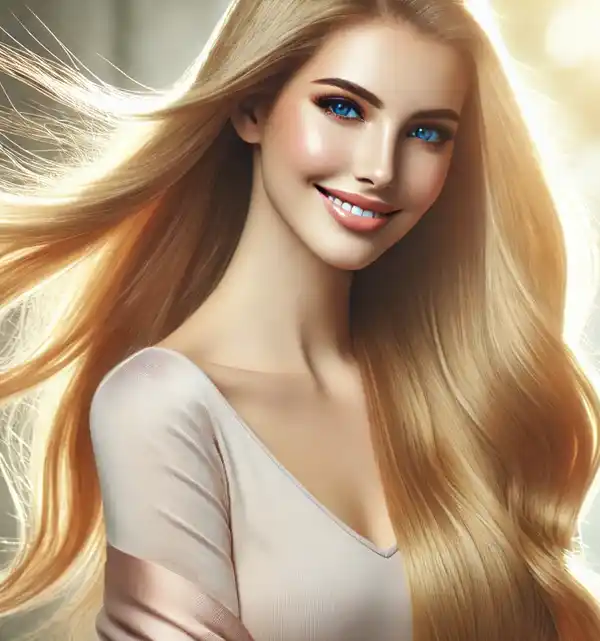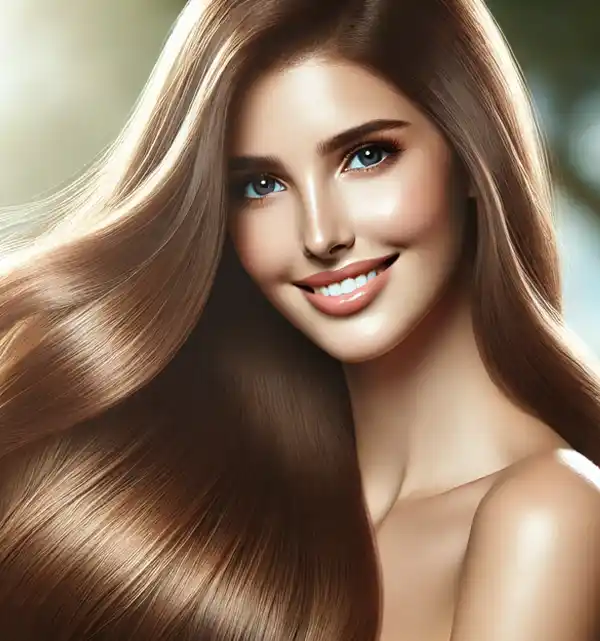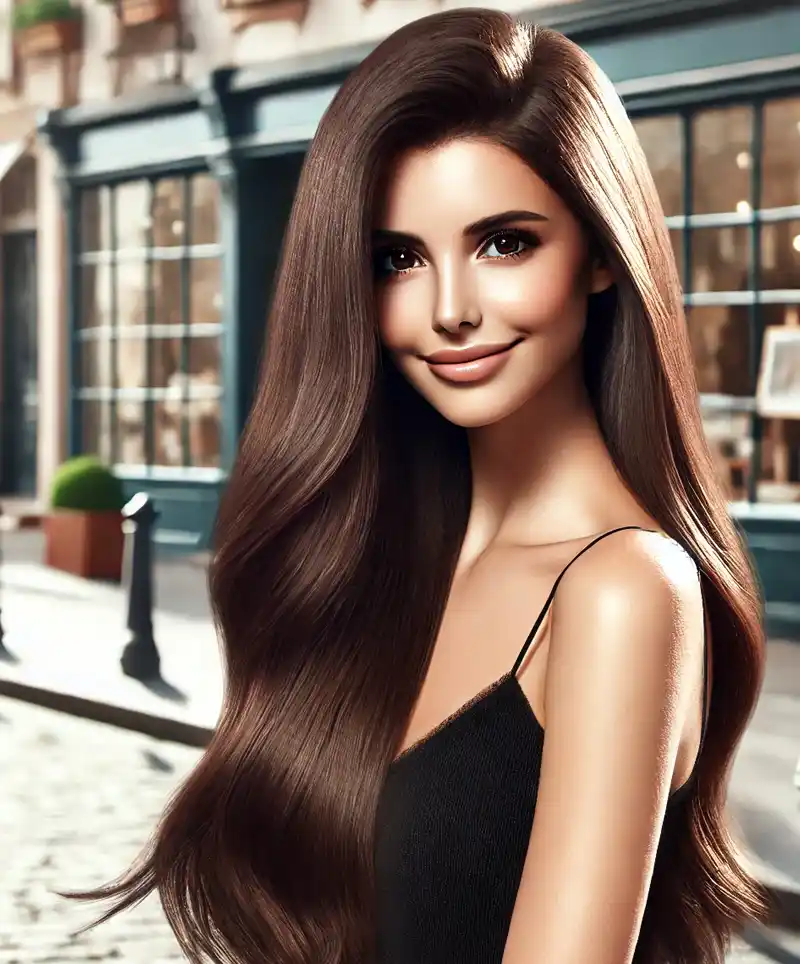When the Stars Align and Your Bangs Behave
There are few things in life more powerful than a Good Hair Day. World peace? Maybe. Finding money in your coat pocket? Close second. But a day when your hair cooperates, shines like it’s in a shampoo commercial, and doesn't require the firepower of six products and a prayer? That’s a real victory.
Let’s dig deep into the world of hair—science, culture, style tips, and plenty of laughs—because Good Hair Day isn’t just a mood, it’s a moment worth celebrating.
 The Hair Lowdown - What Is Hair, Anyway?
The Hair Lowdown - What Is Hair, Anyway?
Hair is made of a protein called keratin, the same stuff in your nails, feathers (if you’re a bird), and the horn of a rhinoceros (please don’t try to curl one). Each strand grows out of a follicle rooted deep in your scalp and follows a growth cycle of growing, resting, and falling out—like a really dramatic soap opera.
The average human head has about 100,000 hair follicles, and we shed roughly 50–100 hairs a day, which sounds alarming until you realize your shower drain already knew that.
Hair comes in all shapes, colors, and textures—straight, wavy, curly, coily—and every one of them is perfect. Why? Because no matter how your hair grows, it’s uniquely you. And when it’s having a good day, it tends to bring your whole attitude up a notch.
A Brief History of Hair (And All the Drama)
Hair has always been more than just something to tame with a comb. Throughout history, it’s been a status symbol, a cultural identifier, a rebellion starter, and occasionally a source of absolute chaos (looking at you, powdered wig era).
In Ancient Egypt, hair was a matter of hygiene and prestige. Many Egyptians shaved their heads to stay cool and avoid lice (smart), then wore elaborate wigs made of human hair, sheep’s wool, or—when times got weird—palm fibers. Cleopatra herself wasn’t out here with bedhead; those styles took serious effort.
Meanwhile, the Greeks and Romans took a shine to oils and hairpieces. Roman men used combs, pomades, and even powdered gold dust (subtle, right?) to achieve their ideal coif. Women often wore their hair in intricate braids and updos that required the engineering skills of a small bridge-building crew.
By the Middle Ages, hair became entangled (literally and metaphorically) with religion and modesty. Noblewomen often wore their hair long but tucked away under elaborate headdresses, while knights rocked the medieval equivalent of a mullet beneath their helmets. It was all about the hair you couldn’t see.
In 17th and 18th century Europe, things got real theatrical. The French court’s obsession with height turned into literal hair-raising styles. Powdered wigs stacked several feet high were adorned with feathers, fruit, miniature ships, and probably small birds who got lost. These wigs were itchy, heavy, and required so much maintenance, they made today’s blowout look like a breeze.
The Victorian era brought us back to natural hair, tight curls, and the occasional lock of hair turned into jewelry (romantic… or creepy? You decide). Hair was sentimental and symbolic—sometimes worn in lockets to remember a loved one, or elaborately pinned for public outings with rules stricter than modern dress codes.
Jump to the 20th century, and hair became an unstoppable force of expression:
The 1920s saw the arrival of the bob, a scandalous act of liberation and flapper confidence.
The 1950s brought pompadours, pin curls, and hair that defied gravity with more hairspray than a hardware store.
The 1960s–70s ushered in long, free-flowing locks and afros—a celebration of natural hair and cultural pride.
The 1980s? Big hair, big dreams, and a national shortage of Aqua Net.
And the 1990s–2000s? Crimped, frosted, twisted, spiked, and sometimes just tragically over-plucked eyebrows paired with gel-slicked ponytails.
Each decade had its trademark look, and hair has always been one of the fastest ways for people to say: “This is who I am.”
Today, we’re more diverse and experimental than ever—embracing natural textures, bold colors, shaved designs, protective styles, and creative cuts that would make Marie Antoinette’s wig stylist weep with envy (and possibly relief).
So yes, hair history has drama—but it’s also got identity, innovation, and an unending supply of flair. One look through history and it's clear: hair doesn’t just grow. It evolves.
The Psychology of a Good Hair Day
Let’s be honest—when your hair looks great, you feel great. It’s not vanity, it’s science. A Good Hair Day can boost confidence faster than a motivational cat poster, and researchers back that up. Studies in social psychology have shown that people who feel satisfied with their appearance—especially their hair—tend to report higher self-esteem, improved mood, and better performance in social and professional situations.
Why? Because hair is personal. It’s one of the first things people notice, and whether it’s been carefully styled, air-dried into beachy waves, or tamed under a cap (no judgment), it plays a huge role in how we present ourselves. When our hair cooperates, it sends a signal to our brain: You’ve got your life together today—even if you're only wearing real pants from the waist up.
Think about the flip side: Ever had a bad hair day before a big meeting or a date? Suddenly, everything feels a little off. You’re distracted, checking reflections in car windows, desperately trying to pat, twist, or fluff it into something respectable. A rogue cowlick becomes a full identity crisis. We’ve all been there.
Interestingly, the connection between hair and emotion is so strong that some therapists consider dramatic hair changes a psychological “reset” after major life events. Breakups, new jobs, existential dread—what’s the first thing people do? Bangs. They cut bangs. Or dye their hair electric blue. It’s not irrational—it’s symbolic. Hair gives us a sense of control in a chaotic world. Plus, nothing screams “fresh start” like rinsing out the past with 30 volume developer and a new look.
Culturally, hair is tied to identity in ways that go beyond the mirror. It’s often linked to age, gender, health, ethnicity, and even spirituality. When we feel good about our hair, it reinforces our connection to who we are—and how we want to be seen by others. Whether it’s straightened, twisted, dyed, natural, or buzzed short, hair gives us a language for self-expression that doesn’t require saying a word.
So yes, a Good Hair Day can change your outlook, your posture, and your Zoom camera confidence level. It can turn a meh Monday into an “I can conquer spreadsheets AND make small talk at the coffee machine” kind of day.
In short: it’s not just about looking good. It’s about feeling like your best, most capable self—one strand at a time.
 Hair Science: Myth vs. Mane Attraction
Hair Science: Myth vs. Mane Attraction
Let’s detangle a few common hair myths:
Myth: Cutting hair makes it grow faster.
Nope. It just makes it look healthier because split ends aren’t photogenic.
Myth: You should brush 100 strokes a day.
Only if you’re starring in a 1950s hair care commercial. Overbrushing can cause breakage.
Myth: Pluck one gray hair and ten more show up.
Not true. But plucking gray hairs is like playing follicular whack-a-mole—it’s not a long-term solution.
Myth: Shampooing daily is a must.
Not necessarily. Too much washing can strip hair of its natural oils. Unless you’ve just done hot yoga next to a guy named Chad who forgot deodorant. Then, yes. Shampoo away.
Hair Around the World: Styles and Statements
Hair is cultural, personal, and often political. Around the globe, it carries deep meaning:
- India: Hair is often offered in temples as an act of devotion.
- Africa: Braiding traditions go back centuries and signify age, tribe, and social status.
- Japan: The samurai wore a chonmage (topknot), partly to hold helmets in place—style meets function.
- United States: The mullet had a moment. We’re still figuring out how we feel about it.
No matter where you’re from, hair often connects us to heritage, fashion, or that questionable impulse to try bangs at 2 AM.
How to Ensure a Good Hair Day (Or at Least Trick People)
Want to set yourself up for follicular success? Here are some helpful tips:
- Hydrate and condition – Dry hair is sad hair.
- Use a silk pillowcase – It’s like a spa day for your strands while you sleep.
- Don’t fight your texture – Work with what you’ve got; it’s less stressful for both of you.
- Dry shampoo = modern miracle – For those days when “washed” is more of a vibe than a reality.
- Find a stylist who gets you – Like a therapist, but with scissors and hot gossip.
Fun Hair Facts to Tease Your Brain
Think you know everything about your lovely locks? Think again. Hair may seem like a simple strand of style, but it’s actually full of surprises—scientific, statistical, and occasionally just plain strange. So before you brush this off (pun absolutely intended), check out these fun facts that’ll have you flipping your hair with a little extra swagger.
- Hair is the second fastest-growing tissue in the body (after bone marrow).
- It can grow up to 6 inches per year—or about 1.5 inches longer than you'd like by the time your next trim rolls around.
- Blonde hair strands are usually finer, but people with blonde hair often have more follicles. Quantity over thickness!
- A single strand can support about 3 ounces of weight. Collectively, your hair could lift a small dog. (Please don’t try.)
Let’s Hear It for the Hair
Good Hair Day isn’t just a cute hashtag or an excuse to flex in front of the mirror. It’s a celebration of self-care, personal expression, and the delightful moment when your reflection smiles back and says, “You nailed it today.”
So go ahead—flaunt those curls, shine those locks, or rock that top knot like the hair gods themselves blessed it. Today is your day, and your hair knows it.
Happy Good Hair Day!
Please Share our Content






 The Hair Lowdown - What Is Hair, Anyway?
The Hair Lowdown - What Is Hair, Anyway? Hair Science: Myth vs. Mane Attraction
Hair Science: Myth vs. Mane Attraction








 "Sláinte!" is a traditional Irish expression used as a toast, equivalent to "Cheers!" in English.
"Sláinte!" is a traditional Irish expression used as a toast, equivalent to "Cheers!" in English.